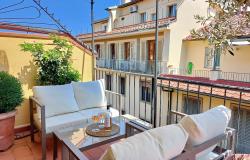Another one for....
Submitted by Esme on Fri, 07/20/2012 - 15:22In reply to A newbie all over again! by Annec
floor over beams
Submitted by sebastiano on Sat, 07/21/2012 - 05:44In reply to A newbie all over again! by Annec
we did this or rather our builders did this.Its quite staight foward.Steel bars were laid (you don't see them) you still see the beams from underneath) a welded steel net was put on top,the concrete put down the floor tiled.job done.The beams were sand blasted then treated with wood stain/preserver/anti wood worm in one product.
Thanks for that! It seemed
Submitted by rachel68 on Sat, 07/21/2012 - 16:50In reply to floor over beams by sebastiano
Thanks for that! It seemed logical to me so excellent to know it is standard stuff and will keep the commune planning team happy as it is earthquake protectivetoo. We have 4 rooms of approx 30m2 each. Do you recall costs and if so for what size rooms? Thank you Rachel
In reply to Thanks for that! It seemed by rachel68
sebastiano is describing a self supporting reinforced concrete slab, which wouldn't care whether the beams were there or not. sagraisolar is describing the more usually enountered (in a restoration) reinforced concrete screed, which would expect the beams below to be loadbearing to a significant extent. If you want to use a self supporting slab, so that the beams below are purely decorative, for sure you'll need an engineer to calculate this for you, and there will be a lot of expensive steel involved - how expensive will depend on the spans involved - anything over 5m gets seriously pricey. It's impossible to even give a ball park figure for costs without a dimensioned plan. It is possible to insert a new slab, while leaving the old beams in place, but the practicality of doing this isn't entirely straightforward - and would usually be considered only for some seriously historic beams. Do you want to see bricks/timber boarding on the ceiling below the new slab, and do you want to keep the small beams as well as the principal beams?
Thanks Fillide, At the
Submitted by rachel68 on Sat, 07/21/2012 - 20:29Thanks Fillide, At the moment, as you stand looking upwards on the ground floor above the big fat, rickety beams are wonderful old warped floorboards of varying widths. I love this look although I think a few newer bits have been forced in over the years. When you get upstairs the floor is caving in in places and is old small cotto tiles on sand or something crumbly! I wanted to lift and preserve as much of the cotto as possible...An issue is that we have been seriously stung by an avaricious builder in making an outbuilding habitable so being short of funds will have to go at the main house in piecemeal fashion now over many years. Presumably if you get in an engineer to sort out load bearing beams/steels...widening openings etc and you want it approved I'd be advised to get the structural package drawn up in one go?
In reply to Thanks Fillide, At the by rachel68
concrete floors
Submitted by sagraiasolar on Sat, 07/21/2012 - 07:56In reply to A newbie all over again! by Annec
We used a lighweight concrete
Submitted by Penny on Mon, 07/23/2012 - 03:03In reply to A newbie all over again! by Annec
We used a lighweight concrete on some similar floors with the usual iron mesh. It is by a company called Weber and is called Leca Mix. It is small clay balls that makes a very strong but very light weight concrete. It is not self-supported but will give you strength and a lot less weight than the usual concrete. It is great where you have uneven floors which would usually require inches of concrete in places to even it out.











